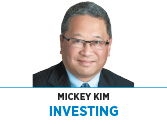Subscriber Benefit
As a subscriber you can listen to articles at work, in the car, or while you work out. Subscribe Now The talking heads have been aflame about the recent surprise retirement of Andrew Luck, the Indianapolis Colts’ four-time Pro Bowl quarterback, and about the inversion of the yield curve—both “sure” signs of impending doom for the team and the U.S. economy/stocks.
The talking heads have been aflame about the recent surprise retirement of Andrew Luck, the Indianapolis Colts’ four-time Pro Bowl quarterback, and about the inversion of the yield curve—both “sure” signs of impending doom for the team and the U.S. economy/stocks.
While Luck’s retirement obviously has nothing to do with the inversion of the yield curve, I’ve often found the world of sports provides useful analogies to the world of investing.
Investors lend money to the government by buying bonds that “mature” (date the principal or amount you lent comes due) at various points in the future. The yield curve simply plots the yield (interest rate) on U.S. Treasury securities from shortest- (three months) to longest-maturity (30 years).
Most of the time, the yield curve has a positive slope, which means longer-maturity securities have a higher yield compared with securities with shorter maturities. The reason for this is, when the economy is growing, investors holding longer-maturity securities assume increased risks of inflation, which can lead to the Fed’s raising interest rates. Bond prices go down when rates go up and, the longer the maturity, the more sensitive the price is to a change in interest rates. It’s confusing, but trust me.
However, occasionally the yield curve “inverts,” as long-term rates fall below short-term rates. This inversion occurs when investors believe the economy is slowing, leading to expectations for lower inflation and the Fed’s reducing interest rates.
Many investors view an inversion as an infallible predictor of an impending economic recession, but it’s not. While it’s true each of the seven recessions since 1962 was preceded by an inverted yield curve, there were also instances when an inverted yield curve was not followed by a recession. Every trout is a fish, but not every fish is a trout.
Neil Irwin of The New York Times described the yield curve as bets by investors on the future direction of the economy and likened it to bets by sports gamblers on a team’s success. For instance, the Colts were clearly a team on the rise, with a new head coach, general manager and a franchise quarterback in the prime of his career. With an upgraded roster, sportsbooks set the team’s expected win total at 9.5 (16-game regular season) and odds of winning the AFC Conference title and making it to the Super Bowl at 8/1.
Irwin posited, what if you could bet on how a team will perform not only this season, but over the next two, five or 10 seasons? Say a betting slip will pay you $10 for each game won. The rising and falling amounts bettors would pay for slips for various future seasons (its “win curve”) would reflect the market’s current evaluation of whether a team’s future will be better than the present. Before Luck’s retirement, the plot of prices paid for Colts betting slips going out as far as 10 seasons would likely be an upward slope (increasing win totals).
Everything changed with Luck’s surprise announcement on Aug. 24, with the Colts’ expected win total dropping to 6.5 and Conference Championship odds plummeting to 25/1. Former backup Jacoby Brissett might prove an adequate replacement, but the Colts’ future is probably not as bright. If bettors had even an inkling Luck might retire much sooner than expected, the team’s “win curve” would certainly have been inverted.
Not only can an inverted yield curve prove to be a “false positive,” it tells you nothing about how long it will be until a recession appears (typically nine to 24 months) nor the severity. In fact, according to Canaccord Genuity, the initial inversion is actually a pretty good “buy signal” for stocks, with a median gain for the S&P 500 from the inversion to the eventual stock market cycle peak of 21%.
It’s inevitable the current expansion will eventually be followed by a recession, which is a normal part of the economic cycle. Still, it’s impossible to say when it will occur or how deep it will be. “It’s different this time” are the most dangerous words in investing, but the fact that there are now $16 trillion of bonds (representing 29% of all global investment grade bonds) with negative yields is clearly distorting U.S. yields/interest rates.
Human nature is to seek simple answers to complex questions. As legendary investor Paul Samuelson once observed about another fallible indicator (stock prices), “the market has predicted nine of the last five recessions.”•
__________
Kim is chief operating officer and chief compliance officer for Kirr Marbach & Co. He can be reached at [email protected].
Please enable JavaScript to view this content.
